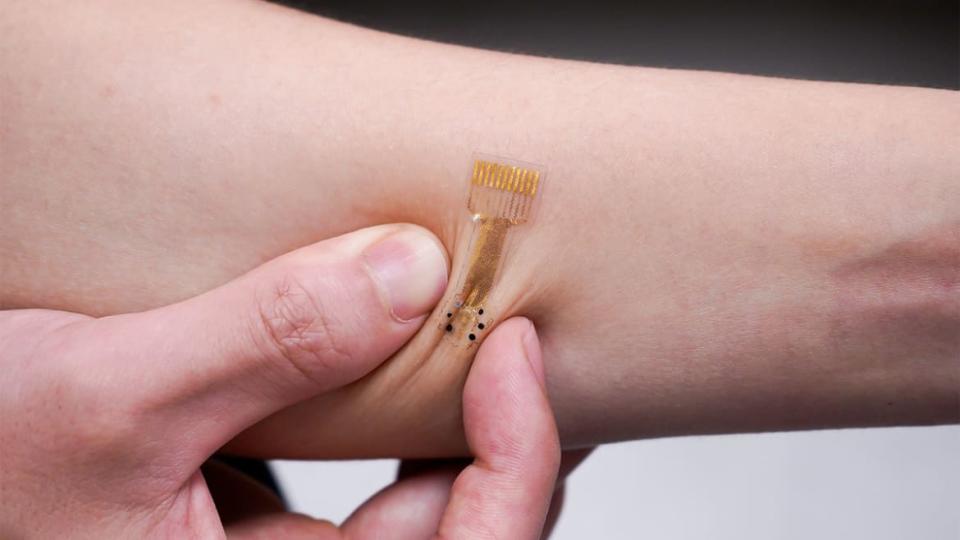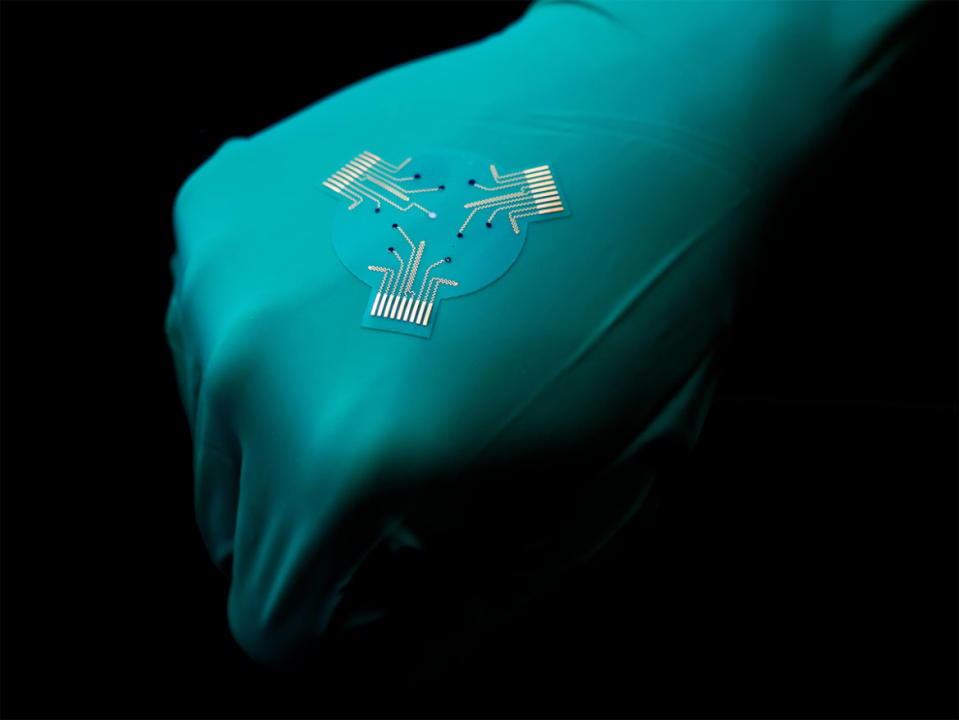This Smart Bandage Zaps Your Wounds to Heal Them Faster

Think about the last time you got a cut or a scrape. Ouch, but no big deal. Just dig through your medicine cabinet for a Band-Aid, put it on, and you’re fine. It’s a small annoyance—but for many people, especially those with diabetes, any small wound can last for a while and become more susceptible to infection. That turns it from a minor inconvenience into something that could potentially be life threatening.
That’s why researchers at Caltech developed a new smart bandage that can help speed up the healing process for those susceptible to chronic wounds. In a study published Friday in the journal Science Advances, the paper’s authors say that their smart bandage uses an array of electronic sensors that allow them to treat wounds more effectively—while saving money in the process.
“There are many different types of chronic wounds, especially in diabetic ulcers and burns that last a long time and cause huge issues for the patient,” Wei Gao, assistant professor of medical engineering at Caltech, said in a statement. “There is a demand for technology that can facilitate recovery.”

The smart bandage is made of a flexible polymer-based material with electronic sensors embedded into it. T
The smart bandage is made of a flexible polymer-based material with electronic sensors embedded into it. These sensors allow the patient and medical care professionals to monitor the wound for important biomarkers like uric acid, which is associated with bacterial infection; and lactate, which encourages healing.
The sensors are also capable of picking up on temperature levels, which could also indicate whether or not the wound is likely to get infected. All of the data collected by the bandage can be wirelessly sent to a computer or smartphone.
Doctors can also use the smart bandage to help speed up the healing process by delivering medications like antibiotics stored on the device, or using a low-level electrical field on the wound to stimulate tissue growth. This can save a lot of money for patients in the long run. After all, the less they have to deal with their wounds, the less they’ll spend on medical care.

A larger version of the smart bandage rests on the back of a gloved hand.
So far, the device has only been tested on animal models in the lab. However, the study’s authors noted that it did help shorten the healing process for the animals. They now hope to build off of the research by testing the device in human trials.
“We have showed this proof of concept in small animal models,” Gao said. He added that “down the road, we would like to increase the stability of the device but also to test it on larger chronic wounds because the wound parameters and microenvironment may vary from site to site.”
Got a tip? Send it to The Daily Beast here
Get the Daily Beast's biggest scoops and scandals delivered right to your inbox. Sign up now.
Stay informed and gain unlimited access to the Daily Beast's unmatched reporting. Subscribe now.

 Yahoo Movies
Yahoo Movies 